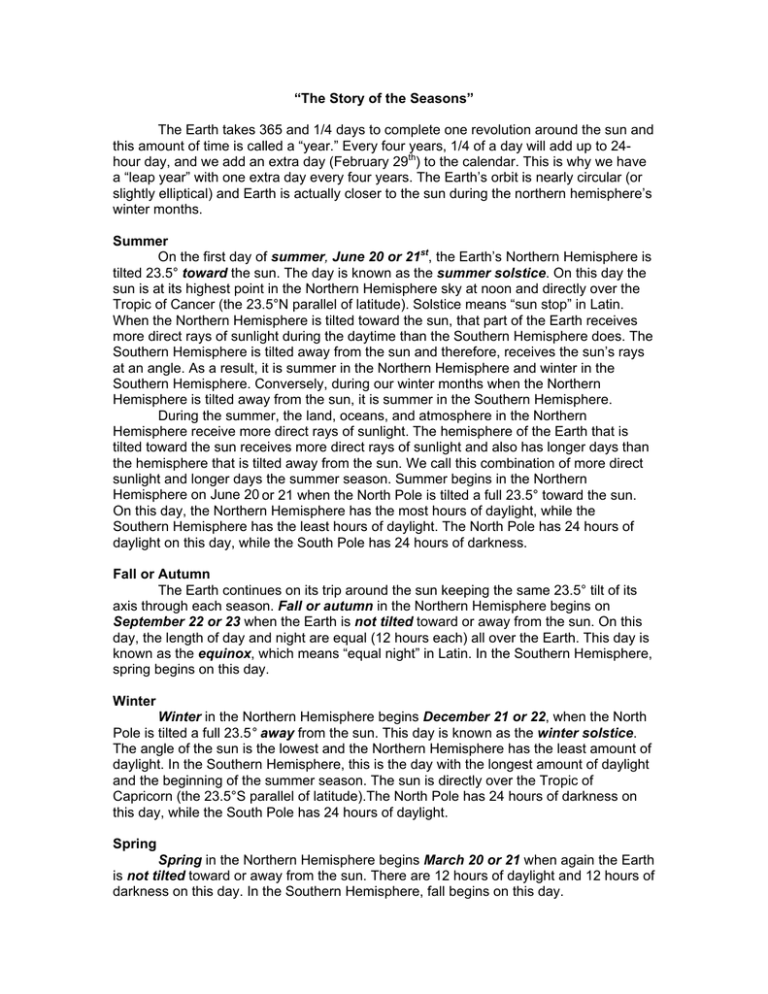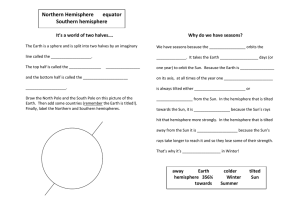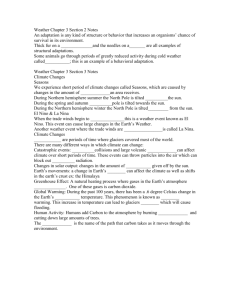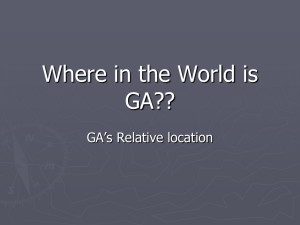“The Story of the Seasons”
advertisement

“The Story of the Seasons” The Earth takes 365 and 1/4 days to complete one revolution around the sun and this amount of time is called a “year.” Every four years, 1/4 of a day will add up to 24hour day, and we add an extra day (February 29th) to the calendar. This is why we have a “leap year” with one extra day every four years. The Earth’s orbit is nearly circular (or slightly elliptical) and Earth is actually closer to the sun during the northern hemisphere’s winter months. Summer On the first day of summer, June 20 or 21st, the Earth’s Northern Hemisphere is tilted 23.5° toward the sun. The day is known as the summer solstice. On this day the sun is at its highest point in the Northern Hemisphere sky at noon and directly over the Tropic of Cancer (the 23.5°N parallel of latitude). Solstice means “sun stop” in Latin. When the Northern Hemisphere is tilted toward the sun, that part of the Earth receives more direct rays of sunlight during the daytime than the Southern Hemisphere does. The Southern Hemisphere is tilted away from the sun and therefore, receives the sun’s rays at an angle. As a result, it is summer in the Northern Hemisphere and winter in the Southern Hemisphere. Conversely, during our winter months when the Northern Hemisphere is tilted away from the sun, it is summer in the Southern Hemisphere. During the summer, the land, oceans, and atmosphere in the Northern Hemisphere receive more direct rays of sunlight. The hemisphere of the Earth that is tilted toward the sun receives more direct rays of sunlight and also has longer days than the hemisphere that is tilted away from the sun. We call this combination of more direct sunlight and longer days the summer season. Summer begins in the Northern Hemisphere on June 20 or 21 when the North Pole is tilted a full 23.5° toward the sun. On this day, the Northern Hemisphere has the most hours of daylight, while the Southern Hemisphere has the least hours of daylight. The North Pole has 24 hours of daylight on this day, while the South Pole has 24 hours of darkness. Fall or Autumn The Earth continues on its trip around the sun keeping the same 23.5° tilt of its axis through each season. Fall or autumn in the Northern Hemisphere begins on September 22 or 23 when the Earth is not tilted toward or away from the sun. On this day, the length of day and night are equal (12 hours each) all over the Earth. This day is known as the equinox, which means “equal night” in Latin. In the Southern Hemisphere, spring begins on this day. Winter Winter in the Northern Hemisphere begins December 21 or 22, when the North Pole is tilted a full 23.5° away from the sun. This day is known as the winter solstice. The angle of the sun is the lowest and the Northern Hemisphere has the least amount of daylight. In the Southern Hemisphere, this is the day with the longest amount of daylight and the beginning of the summer season. The sun is directly over the Tropic of Capricorn (the 23.5°S parallel of latitude).The North Pole has 24 hours of darkness on this day, while the South Pole has 24 hours of daylight. Spring Spring in the Northern Hemisphere begins March 20 or 21 when again the Earth is not tilted toward or away from the sun. There are 12 hours of daylight and 12 hours of darkness on this day. In the Southern Hemisphere, fall begins on this day.




